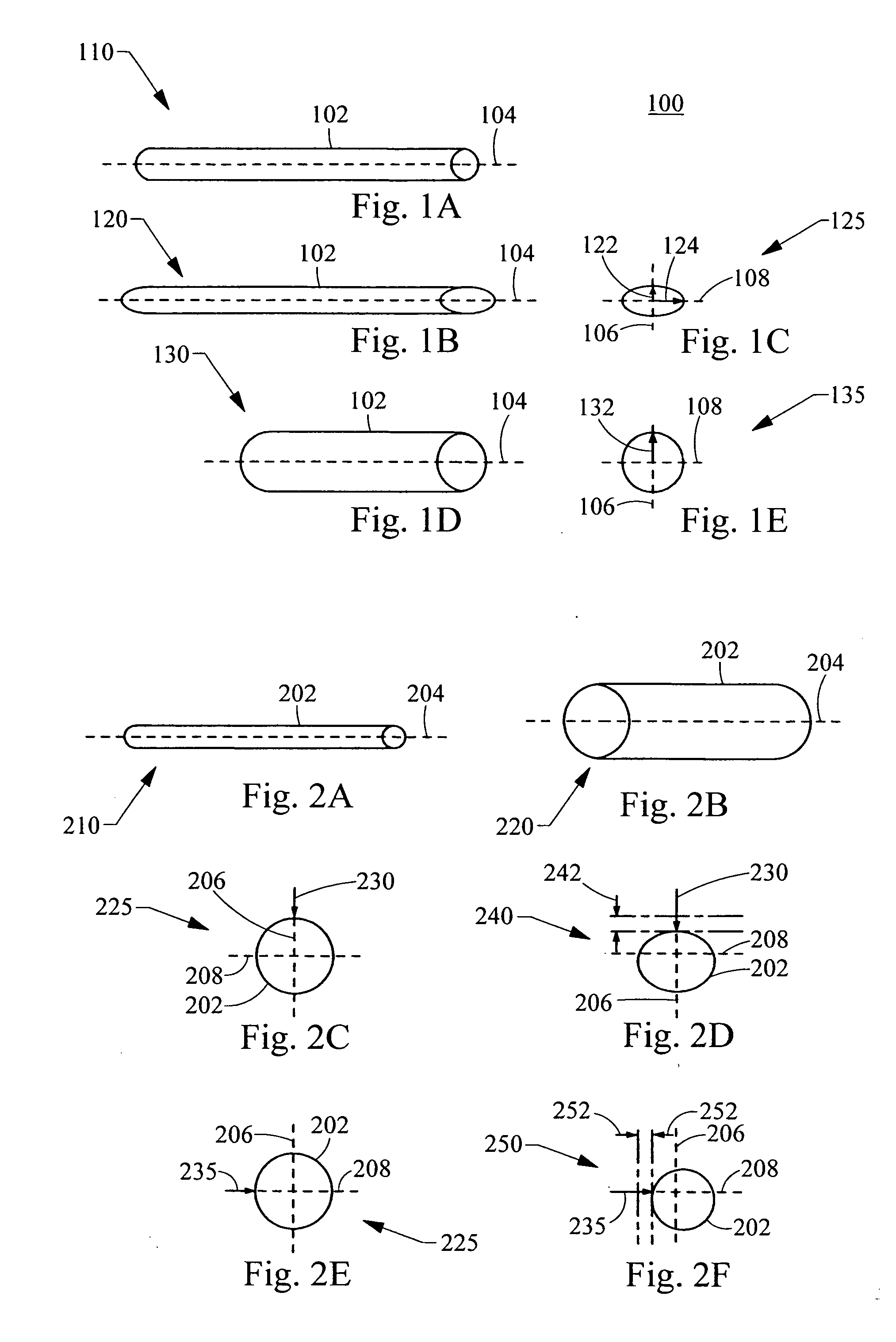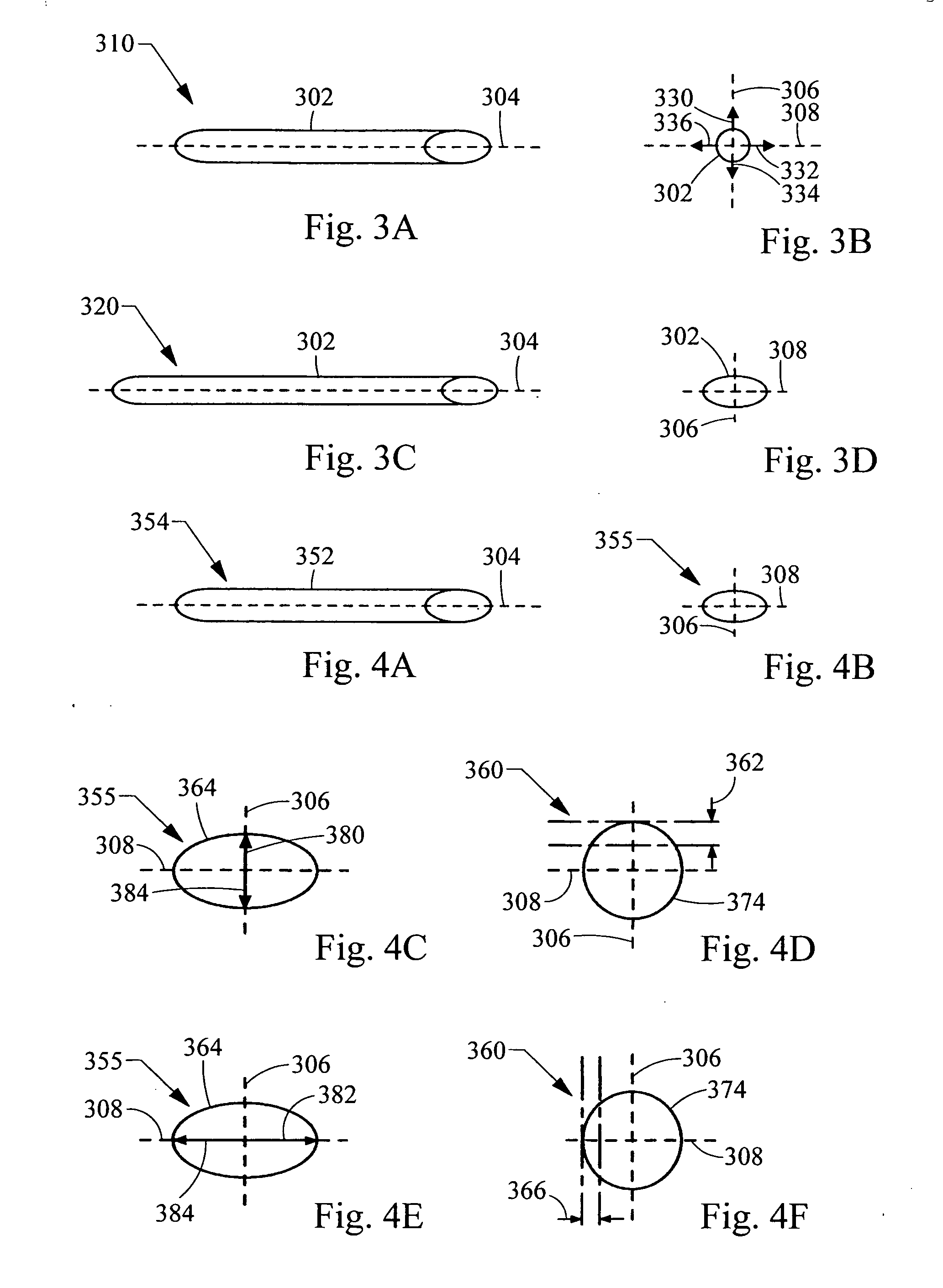Implantable medical device with optimized shape
a medical device and shape technology, applied in the field of medical devices, can solve the problems of inability to design implantable prosthetic devices, inability to respond to implantable devices for treating venous valve insufficiency, and insufficient responsiveness of implantable devices
- Summary
- Abstract
- Description
- Claims
- Application Information
AI Technical Summary
Benefits of technology
Problems solved by technology
Method used
Image
Examples
first embodiment
[0038]FIG. 1A is a perspective view of a medical device 100 according to the invention. The medical device comprises a frame with a tubular frame body 102. The medical device 100 shown in a perspective view in FIG. 1B and an end view in FIG. 1C. The medical device 100 is delivered to a body vessel in a compressed configuration 110 substantially aligned with the longitudinal axis 104 of the body vessel (body vessel not shown), and is then expanded 112 to a radially-expanded configuration upon deployment within the body vessel. The tubular frame body 102 can be expanded by any suitable method, including self-expansion of the frame material or balloon expansion. Two expanded configurations are shown. The first expanded configuration 120, shown in the perspective view of FIG. 1B and the corresponding end view of FIG. 1C, has an elliptical cross-section 125. A second expanded configuration 130, shown in the perspective view of FIG. 1D and the corresponding end view of FIG. 1E, has a circ...
second embodiment
[0040] The frame can also, in a second embodiment, be characterized by a first radial compressibility along a first radial direction that is less than a second radial compressibility along a second direction.
[0041]“Radial compressibility” refers to the radial displacement of the body frame in response to a given force directed radially inward toward the center of the frame. FIG. 2A is a perspective view of a medical device 200 in a compressed delivery configuration and FIG. 2B is a perspective view of the medical device 200 in an expanded configuration 220. The expanded configuration 220 has a first radial compressibility first direction, as shown in end views of FIG. 2C and FIG. 2D, and a second radial compressibility in a second direction, as shown in end views of FIG. 2E and FIG. 2F. The medical device 200 comprises a frame with a tubular frame body 202 having a compressed configuration 210 for intraluminal delivery to a body vessel. Upon radial expansion 212 within the body vess...
third embodiment
[0044] The frame can also, in a third embodiment, be characterized by a first radial expandability along a first radial direction that is less than a second radial expandability along a second direction.
[0045]“Radial expandability” refers to how easily a given force applied outward from inside the frame can displace the frame outward. The radial expandability can be same or different from the radial compressibility for a given frame embodiment. Radial expandability can be measured by comparing the radial frame displacement in response to a force applied to the frame radially outward, away from the center of the frame, along at least two different directions. Like measuring radial compressibility, the greater the displacement of the frame in response to the applied force in a particular direction, the greater the radial expandability of the frame in that direction.
[0046]FIG. 3A shows perspective view (with corresponding end view of FIG. 3B) of a medical device 300 having a greater e...
PUM
 Login to View More
Login to View More Abstract
Description
Claims
Application Information
 Login to View More
Login to View More - R&D
- Intellectual Property
- Life Sciences
- Materials
- Tech Scout
- Unparalleled Data Quality
- Higher Quality Content
- 60% Fewer Hallucinations
Browse by: Latest US Patents, China's latest patents, Technical Efficacy Thesaurus, Application Domain, Technology Topic, Popular Technical Reports.
© 2025 PatSnap. All rights reserved.Legal|Privacy policy|Modern Slavery Act Transparency Statement|Sitemap|About US| Contact US: help@patsnap.com



